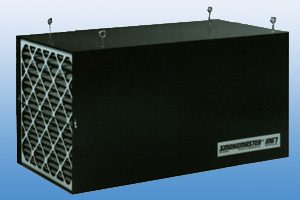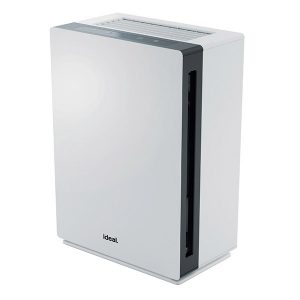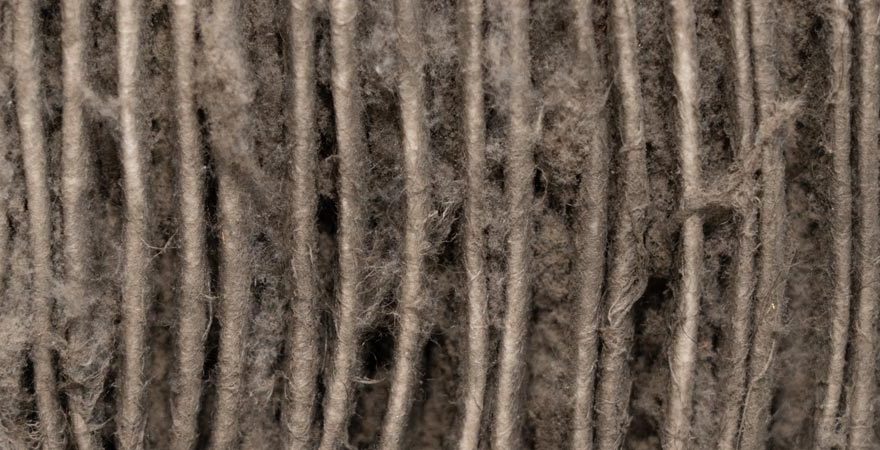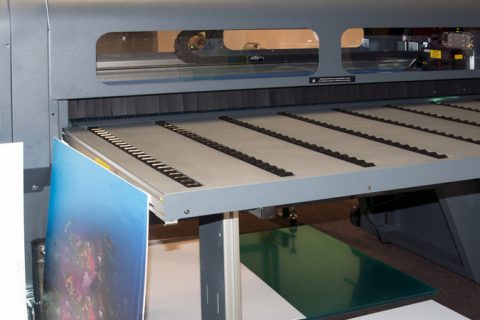We all think about our tools, our equipment, our supplies. You need the right input to get the best output. But how many of us actually think about our most important assets… people?
By now, most of us realize the air quality inside buildings is often worse than outside. Even if it seems the air outside looks hazy or smells funny, it benefits from movement. As efficiency standards become more stringent, buildings become more airtight. This means the exchange of air between outside and inside rarely happens. Any contaminants that make their way in through the door, stay inside. Any contaminants that are inside, potentially make it into our lungs.
Most of us remain inside for large portions of our days, breathing stale air. So, what can we do to improve our air inside?
Common Hazards

As you may imagine, indoor air contains a number of contaminants found outside, like pollen and smog, but also many others that are not found in significant concentration in open areas, like dust, pet dander and mold. Working in an office or print shop poses additional air quality hazards that you may not think about. According to this 2013 study in PubMed Central by The National Center for Biotechnology Information, https://www.ncbi.nlm.nih.gov/pmc/articles/PMC3849716/ “Photocopiers emit high levels of particulate matter. Long term exposure to emissions from photocopiers was not associated with decreased lung function, but resulted in high oxidative stress and systemic inflammation leading to high risk of cardiovascular diseases.”
Chemicals used and emitted during other printing and finishing operations pose other threats. They are well documented and warnings exist on individual containers about proper safety precautions. But what about other people in the building? Even if you are not directly involved in the printing process, but can smell the chemicals, what is your exposure?
Air Filters
HVAC systems contain air filters. Standard filters are great at capturing larger particles, like dust. Specialty filters can even trap mold spores and bacteria, but also put a larger burden on the blowers to move air through very fine mesh.
If you run or work in a print shop or business that handles significant amounts of solvents and chemicals, you probably have industrial systems to keep the air clean. These systems are specifically designed to force air through fine filter media, rather than heat or cool an entire building. But what if your office does not have a large, expensive air filtration system? Luckily, you have numerous options.
A quick search for office air purifiers reveals hundreds, if not thousands, of different models. They range in size from tiny, personal units that sit on a desk, to units that can handle thousands of square feet. Lloyd’s of Indiana carries some of the best office air purifiers on the market. Designed to meet strict air quality standards, these units feature quality construction and state of the art filtration.
What to look for

Air purifiers are rated by the size of particulates they capture in microns (smaller is better), and by air circulation, usually expressed as the square footage of the room they can handle.
- 1 Micron = 1 millionth of a meter = 1/25,400th of an inch
- Pollen and mold spores = 5 to 10 microns
- Bacteria = 0.1 to 60 microns
- Viruses = 0.01 to 0.2 microns
So, you can see, you need a fine filter to trap all the nasty things in our air. Filters that can effectively trap viruses are expensive, but necessary in certain professions.
The square footage rating of purifiers refers to the largest room size the filter is designed to operate in. That size is calculated from the volume of air the blowers move per hour. While the air will eventually exchange between rooms, purifiers are most effective within a single room. If you have multiple rooms, consider using smaller units in each, rather than add up total square footage.
When shopping for air purifiers, try to get the best one you can afford that can handle the size of room it will live in.



